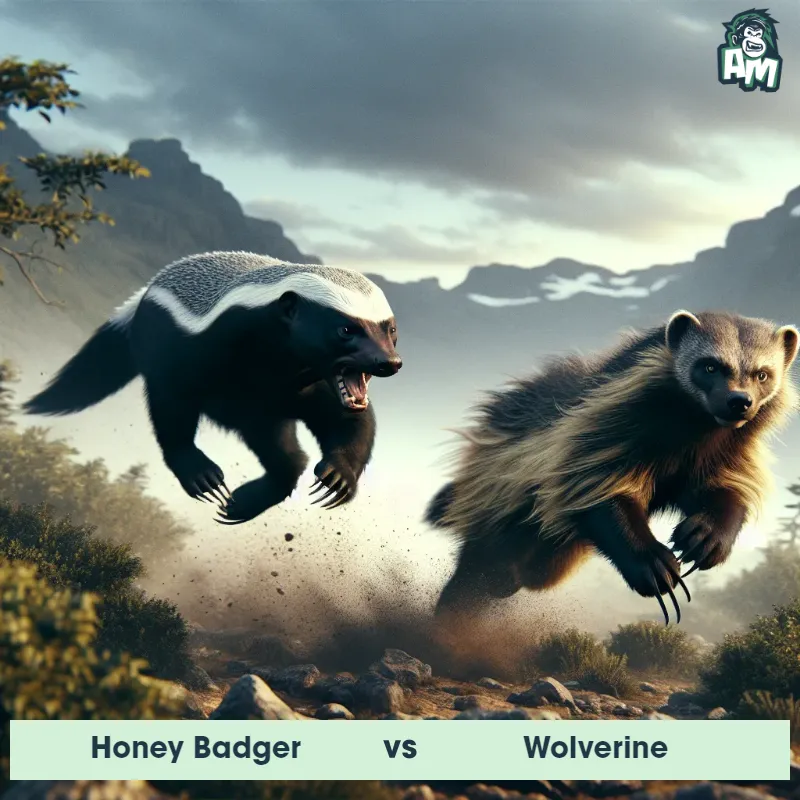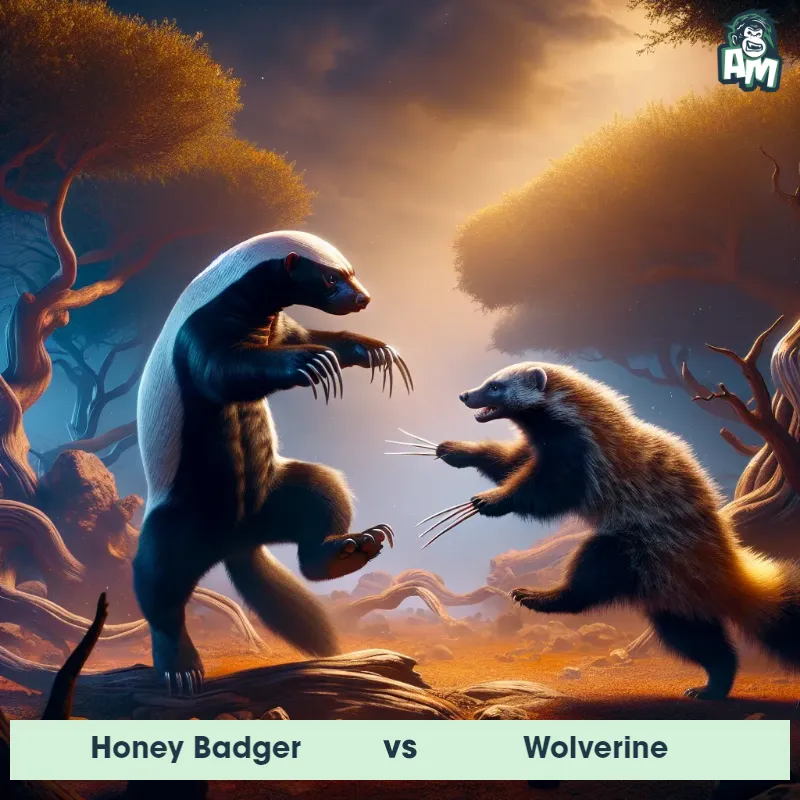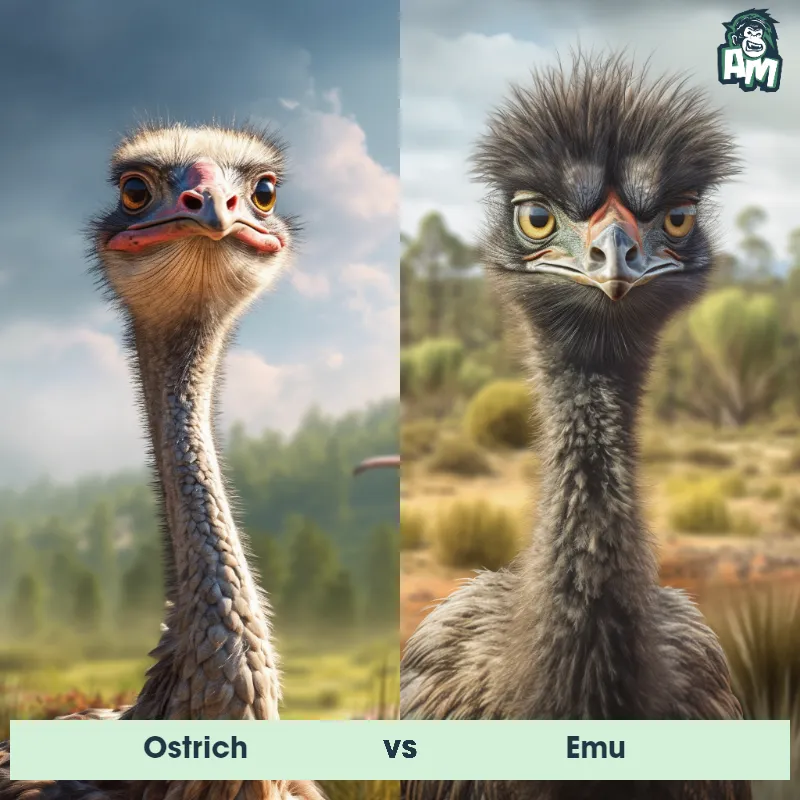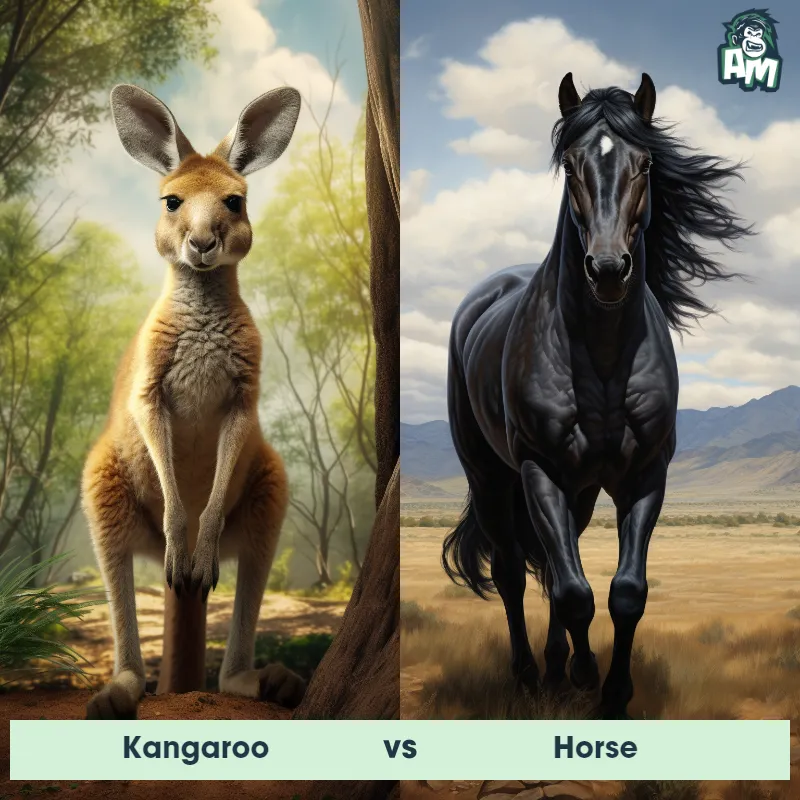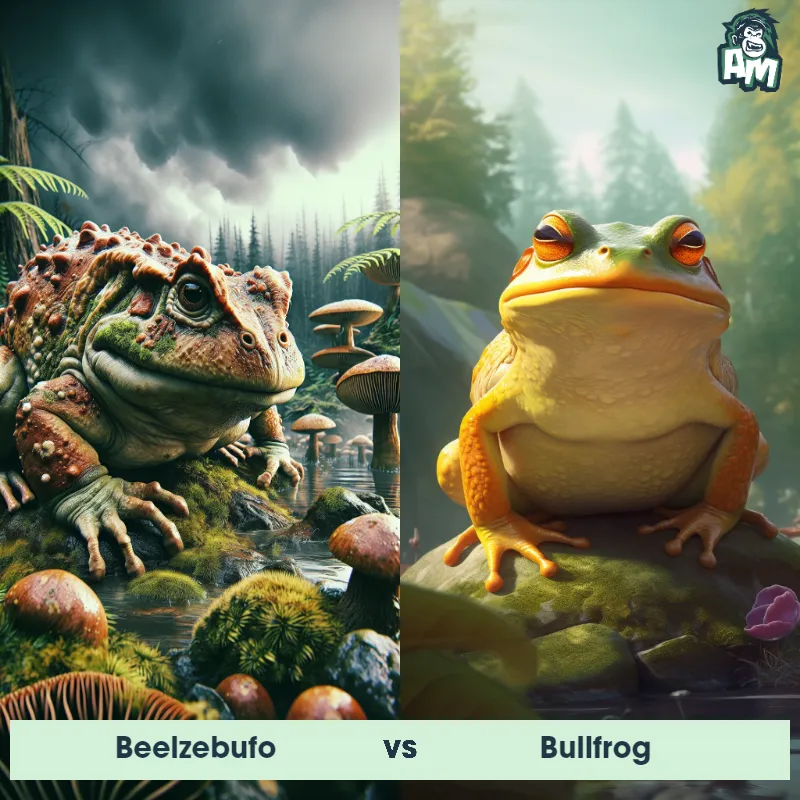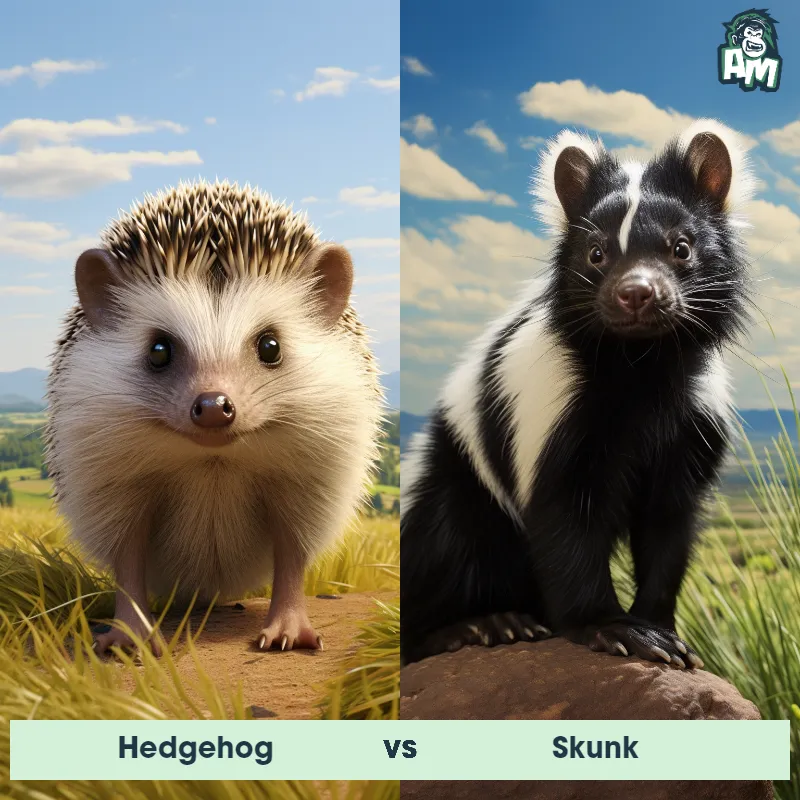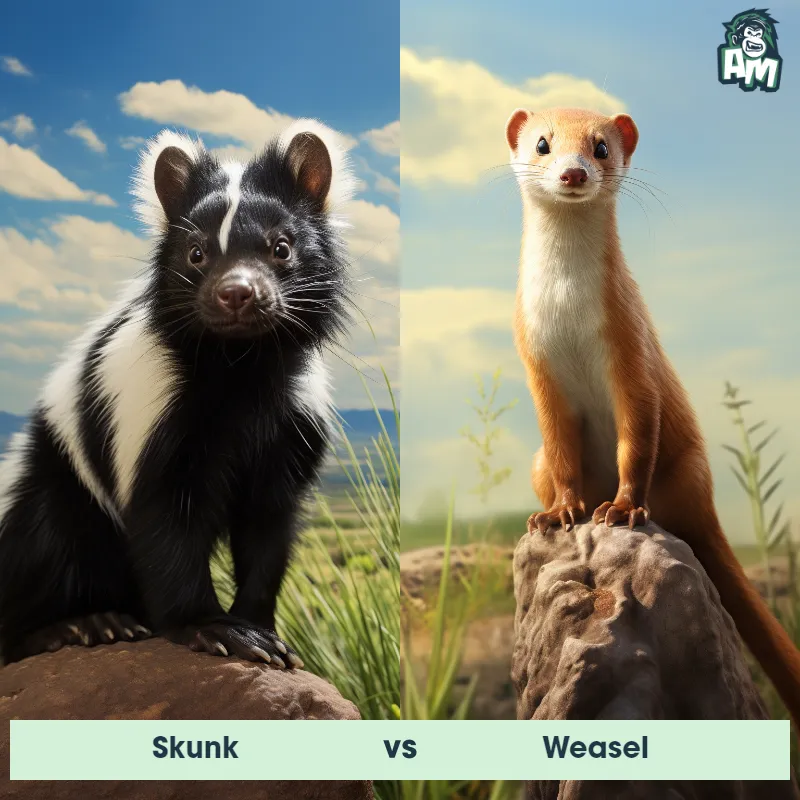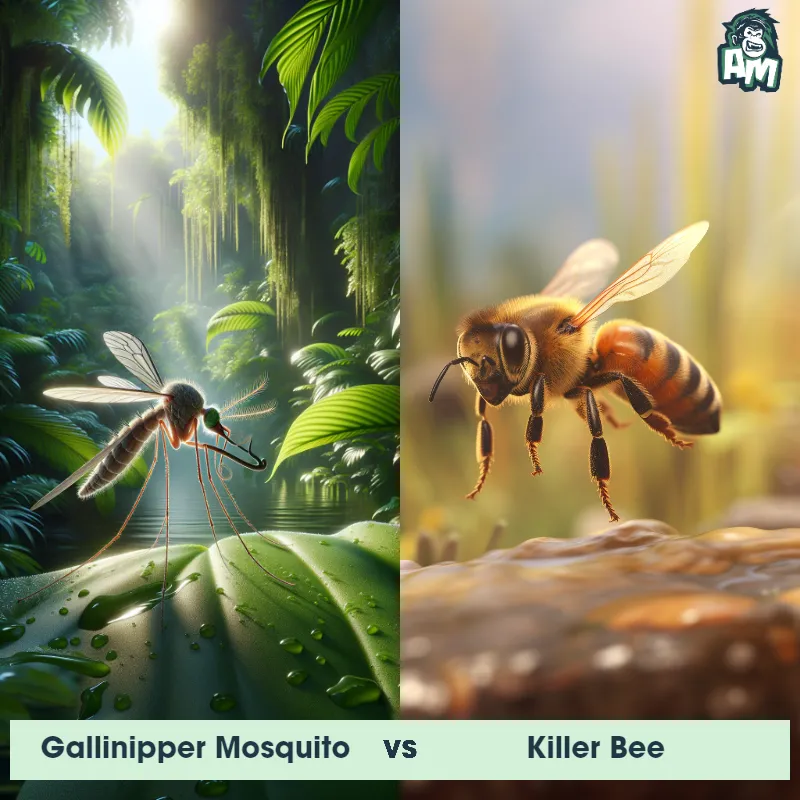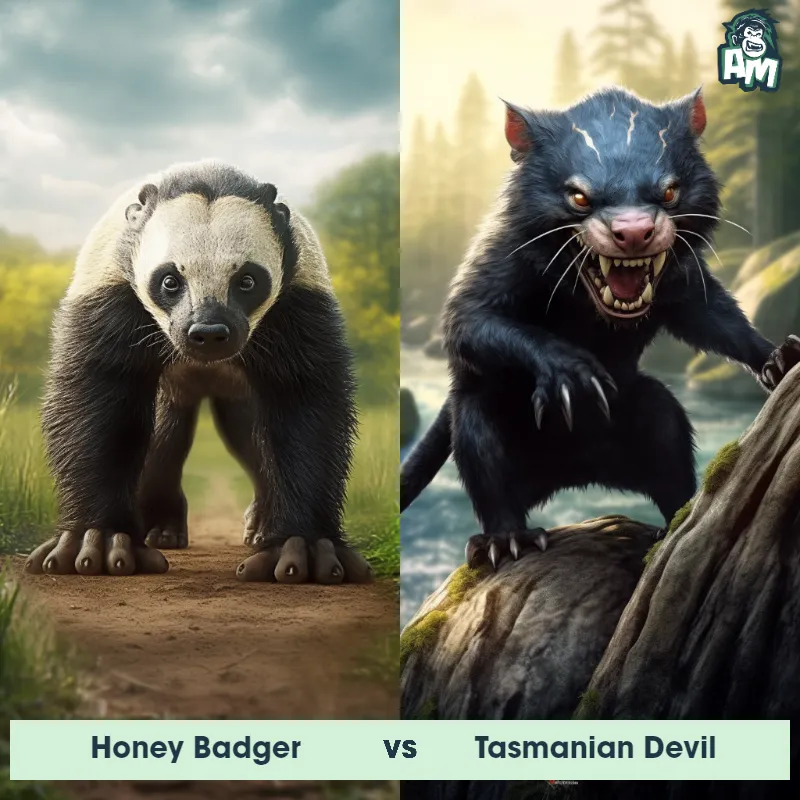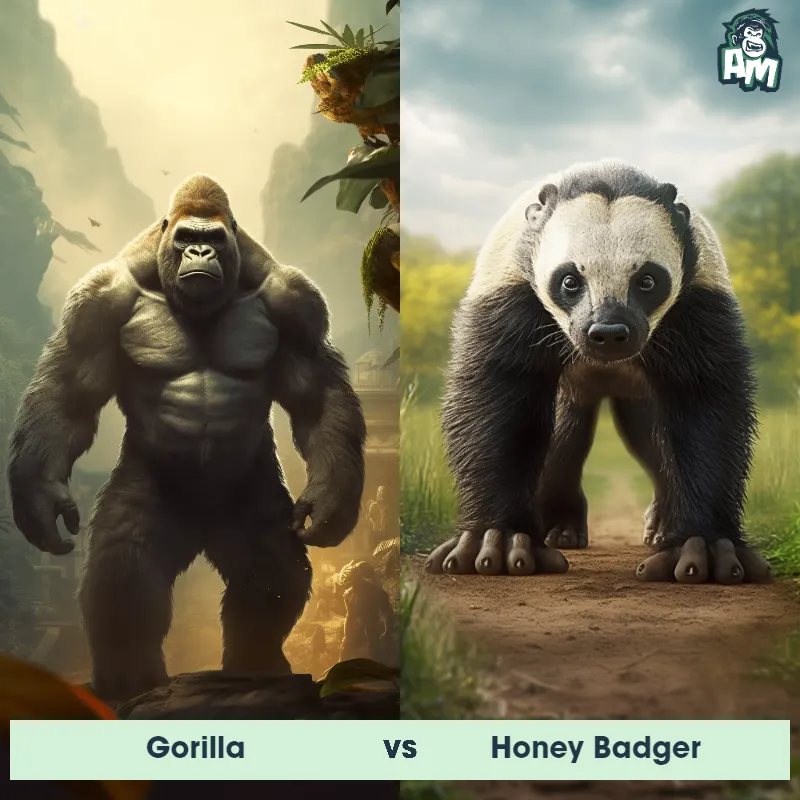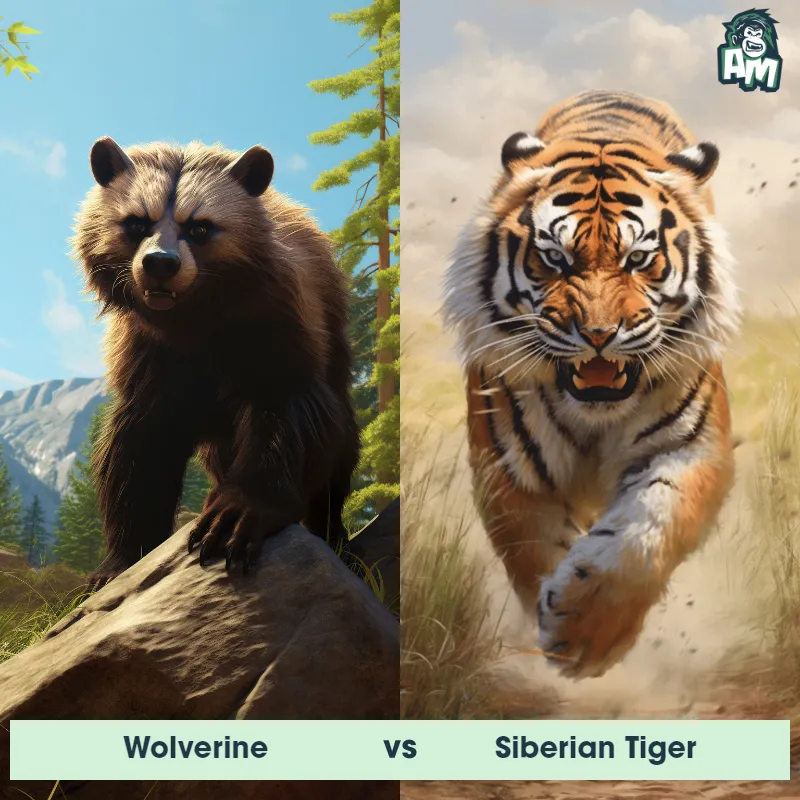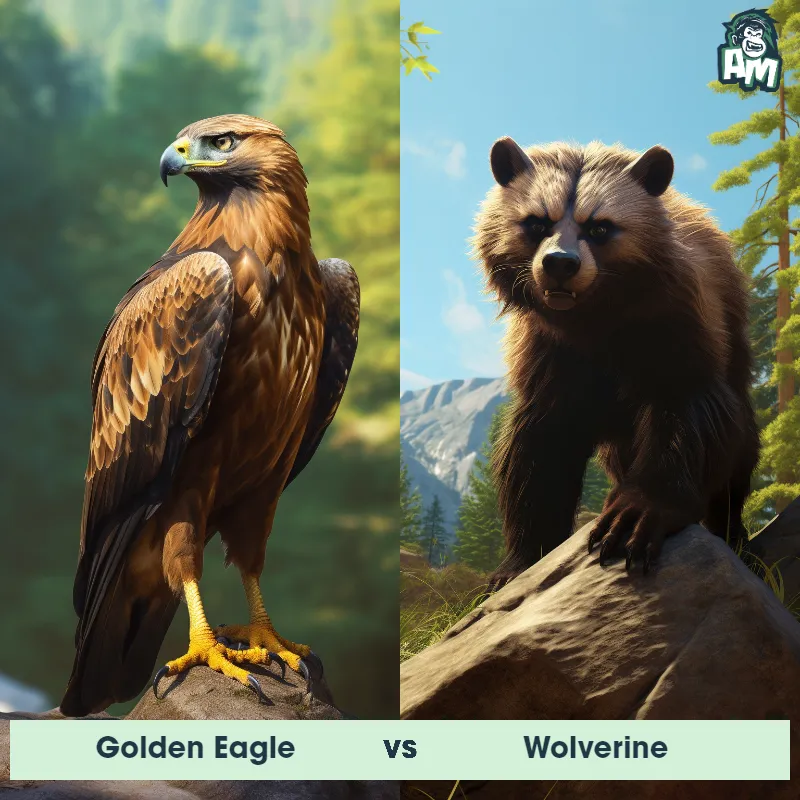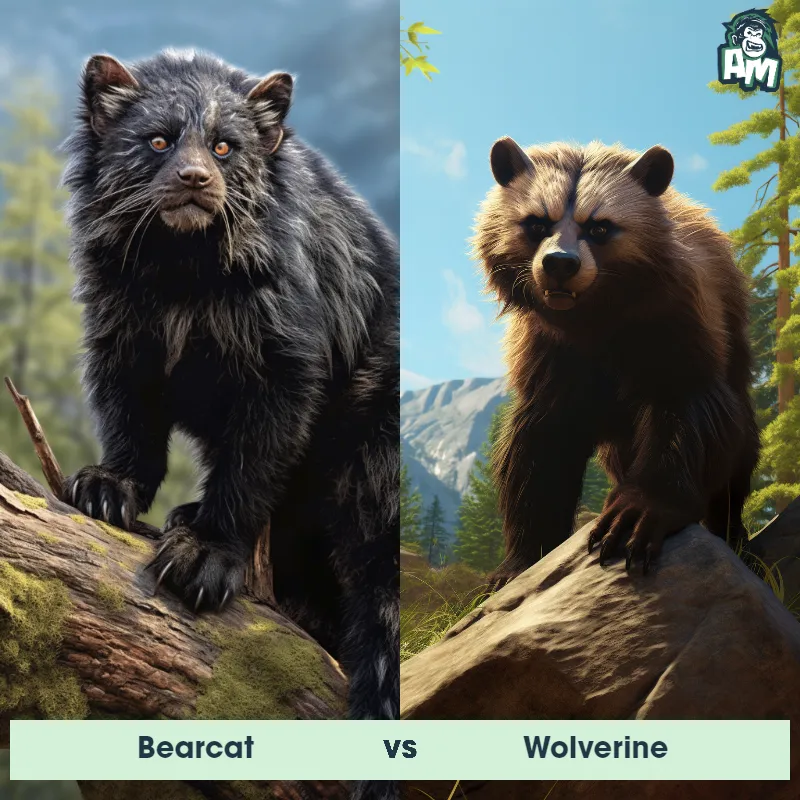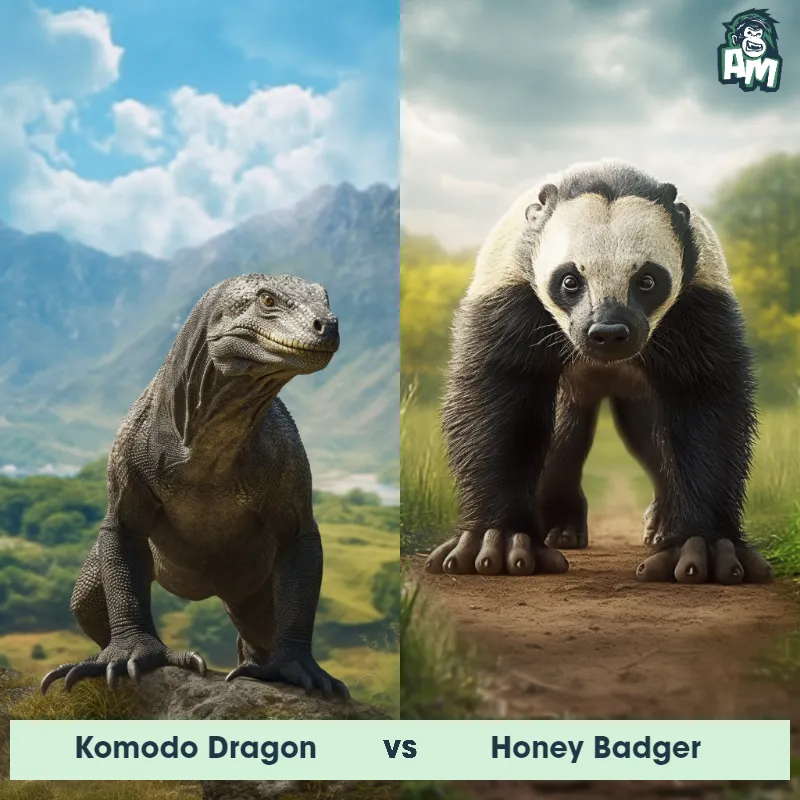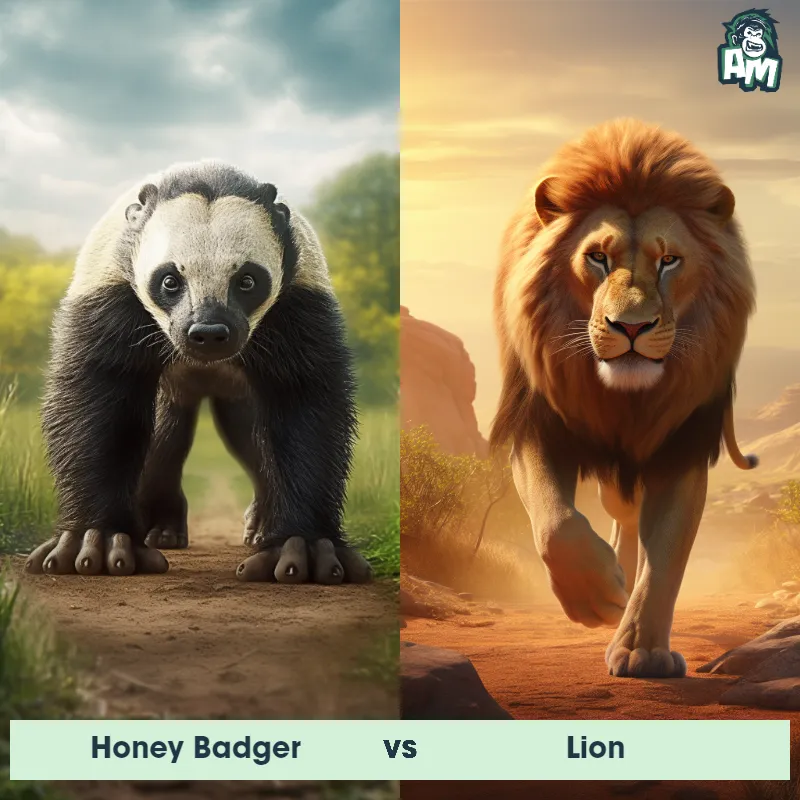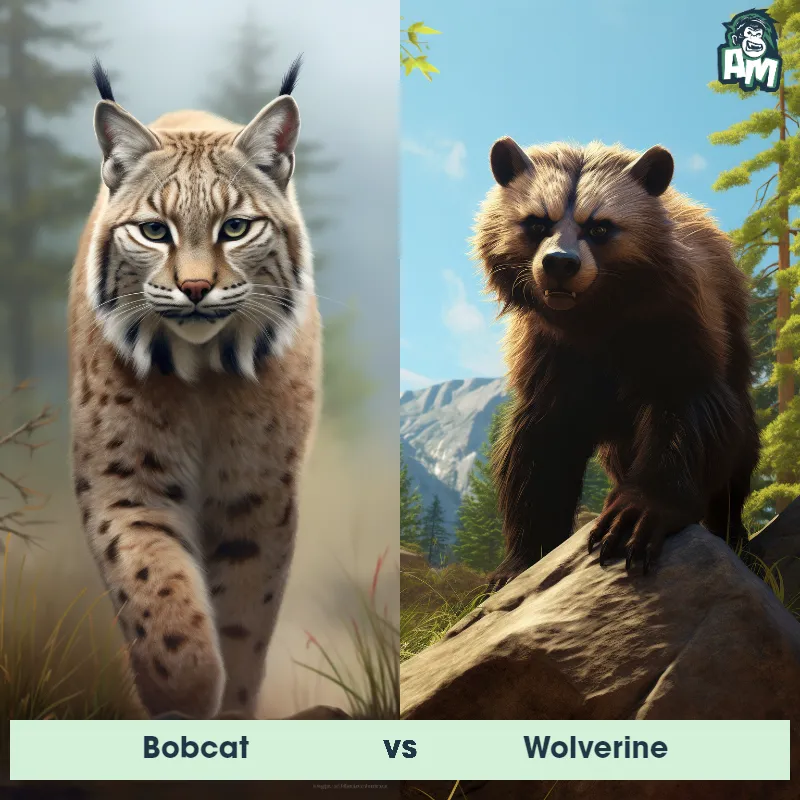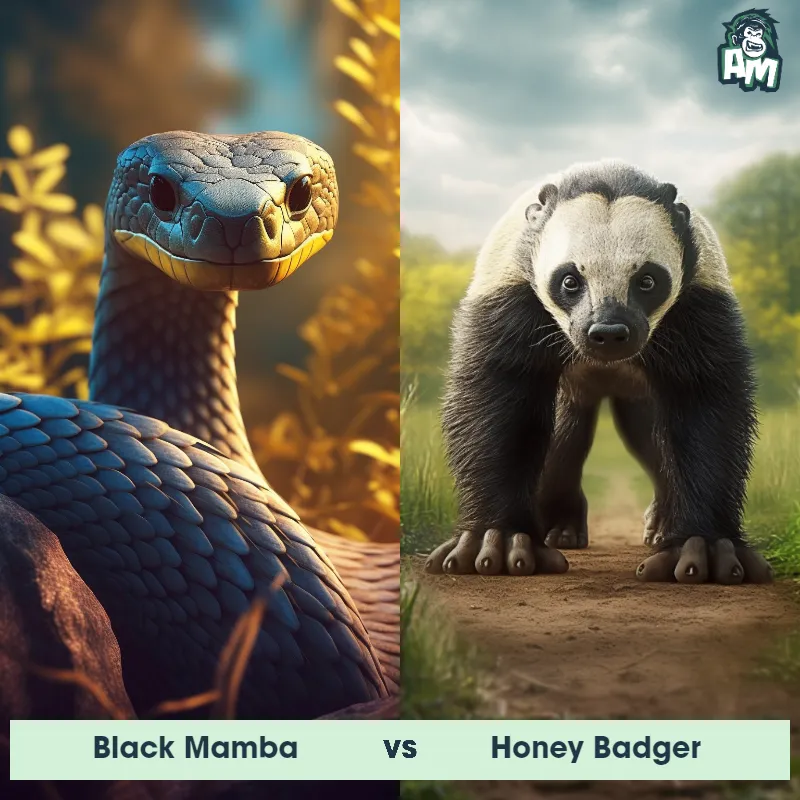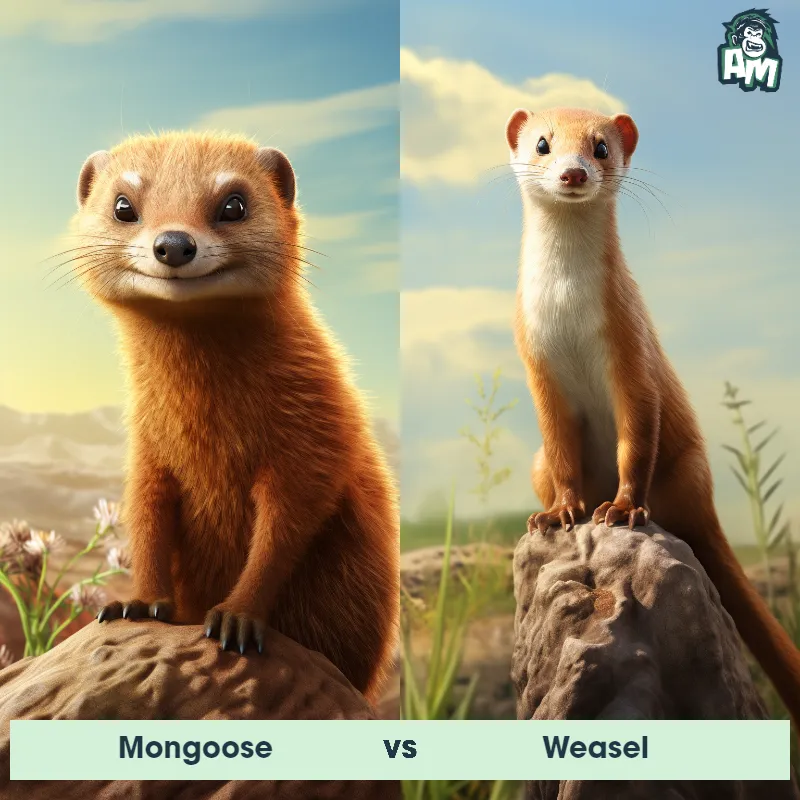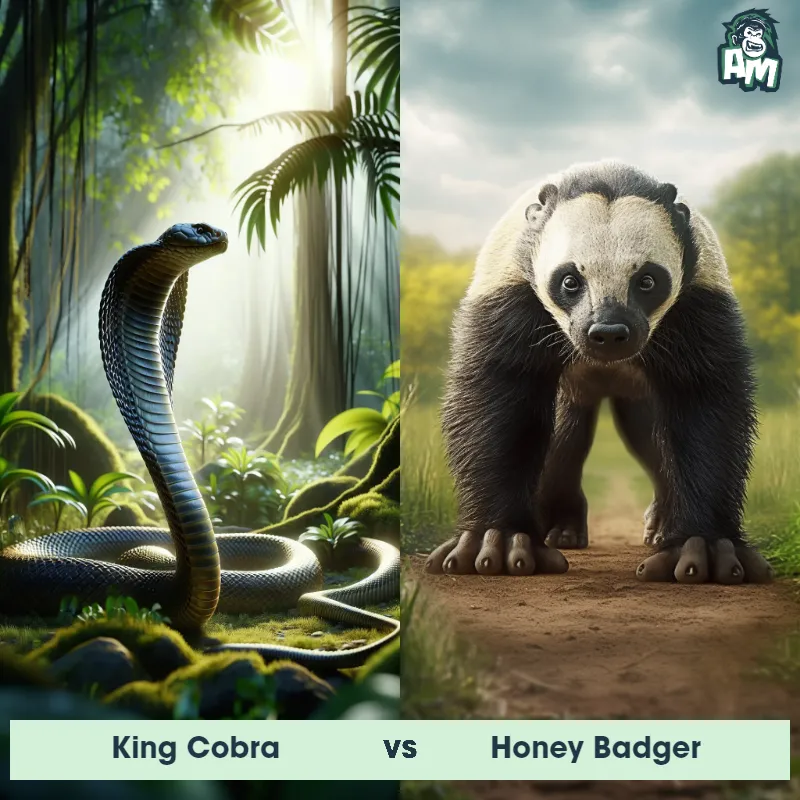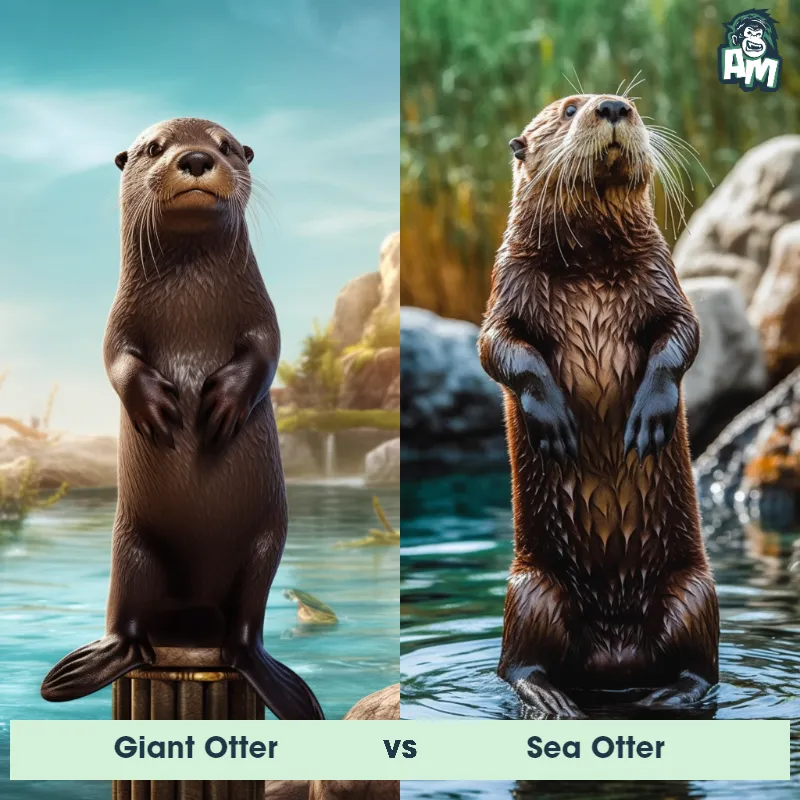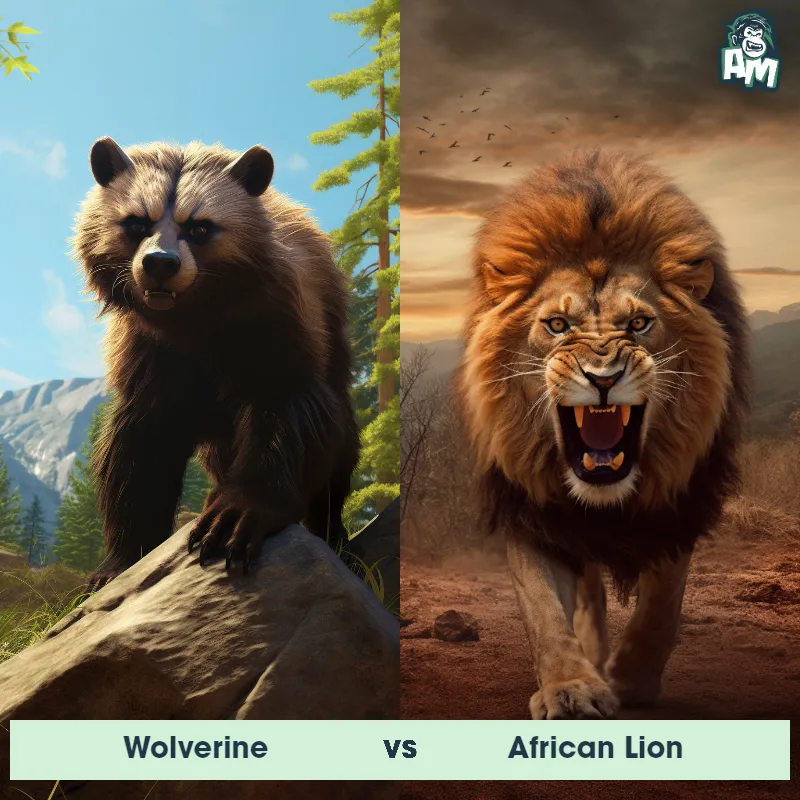Honey Badger vs WolverineSee Who Wins
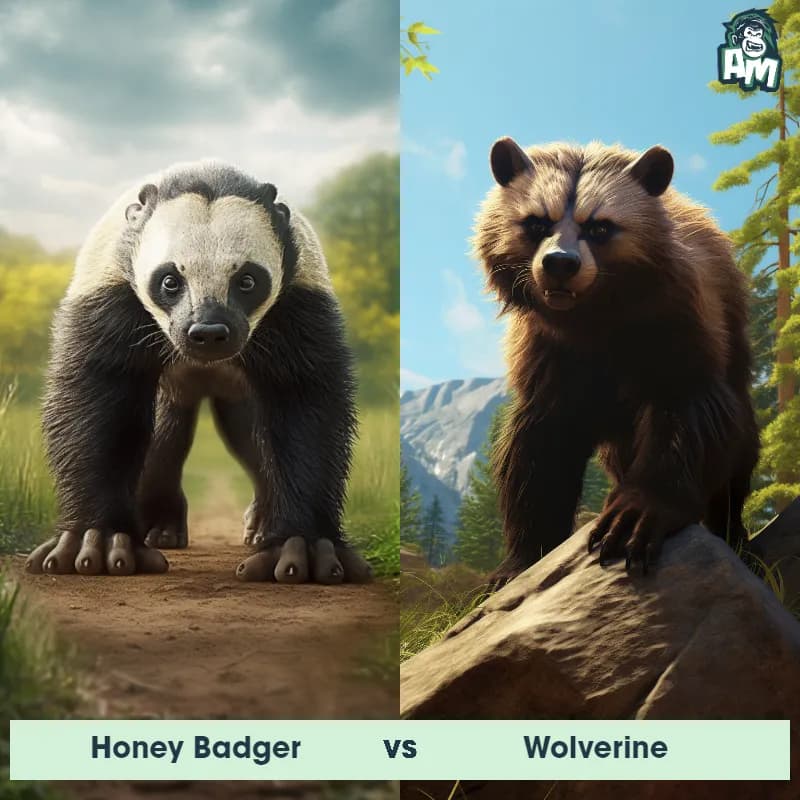
Ladies and gentlemen, welcome to this exhilarating showdown between two of nature's most tenacious and fearless mammals - the Honey Badger and the Wolverine! I'll be guiding you through the play by play for this three-round contest. Let the battle commence!
Contender 1: Honey Badger
The Honey Badger, also known as the ratel, is a small carnivorous mammal found in Africa, Southwest Asia, and the Indian subcontinent. They have a stocky build, with a broad head, powerful jaws, and sharp claws. Their fur is thick and coarse, ranging in color from gray to black with a distinctive white stripe on their back. Honey Badgers are known for their fearless and aggressive nature, often taking on animals much larger than themselves, such as lions and hyenas. They are also known for their ability to withstand venomous snake bites and their love for honey, which they obtain by raiding beehives.
Fun Fact: Honey Badgers have been known to dig up and eat buried human corpses, earning them the nickname "the world's most fearless animal."
Contender 2: Wolverine
The Wolverine, also known as the Gulo gulo, is a stocky and muscular mammal that belongs to the weasel family. They have a thick, dark brown fur that helps them survive in cold environments. Wolverines have sharp claws and powerful jaws that allow them to hunt and scavenge for food. They are known for their ferocity and tenacity, and are able to take down prey much larger than themselves.
Fun Fact: Wolverines have a reputation for being tough and fearless, and are known to attack animals much larger than themselves, such as moose and caribou.
Matchup Stats
| Honey Badger | Wolverine | |
|---|---|---|
| Size | 25-30 inches (63-76 cm) in length | 26-34 inches (66-86 cm) in length |
| Weight | 19-26 pounds (9-12 kg) | 22-55 pounds (10-25 kg) |
| Speed | Speed: 20 mph (32.19 km/hr) | Speed: 30 mph (48.28 km/hr) |
| Key Strength | Powerful jaws and sharp claws | Powerful jaws and sharp claws |
| Biggest Weakness | Short legs and small size | Short legs and slow movement |
Current Votes
Honey Badger vs Wolverine
See Who Wins
Match Highlights
View More Matches
Looking For More?
Similar Matches
Scientific Stats
| Honey Badger | Wolverine | |
|---|---|---|
| Scientific Name | Mellivora capensis | Gulo gulo |
| Family | Mustelidae | Mustelidae |
| Habitat | Terrestrial | Forests, tundra, and alpine meadows |
| Geography | Africa, Southwest Asia, and the Indian subcontinent | North America, Europe, and Asia |
| Diet | Carnivorous, eats small mammals, birds, reptiles, insects, and honey | Carnivorous, feeding on small mammals, birds, fish, and carrion |
| Lifespan | 24 years - 26 years | 5 years - 13 years |
Key Differences between Honey Badger and Wolverine
- Size: Honey Badgers are smaller than Wolverines, with an average weight of 25-35 pounds compared to Wolverines which can weigh up to 55-90 pounds.
- Ears: Honey Badgers have small, rounded ears, while Wolverines have larger, pointed ears.
- Diet: Honey Badgers are omnivores, eating a variety of foods including insects, small mammals, and fruit, while Wolverines are carnivores, primarily eating meat such as rodents, birds, and carrion.
- Fur: Honey Badgers have short, coarse fur that is mostly black with a white stripe on their back, while Wolverines have longer, shaggier fur that can range from dark brown to black.
- Claws: Honey Badgers have long, sharp claws that they use for digging and climbing, while Wolverines have shorter, more curved claws that they use for gripping and tearing.
- Habitat: Honey Badgers are found in Africa and parts of Asia, while Wolverines are found in northern regions of North America, Europe, and Asia.
- Tail: Honey Badgers have a short, bushy tail, while Wolverines have a longer, bushy tail that they use for balance.



